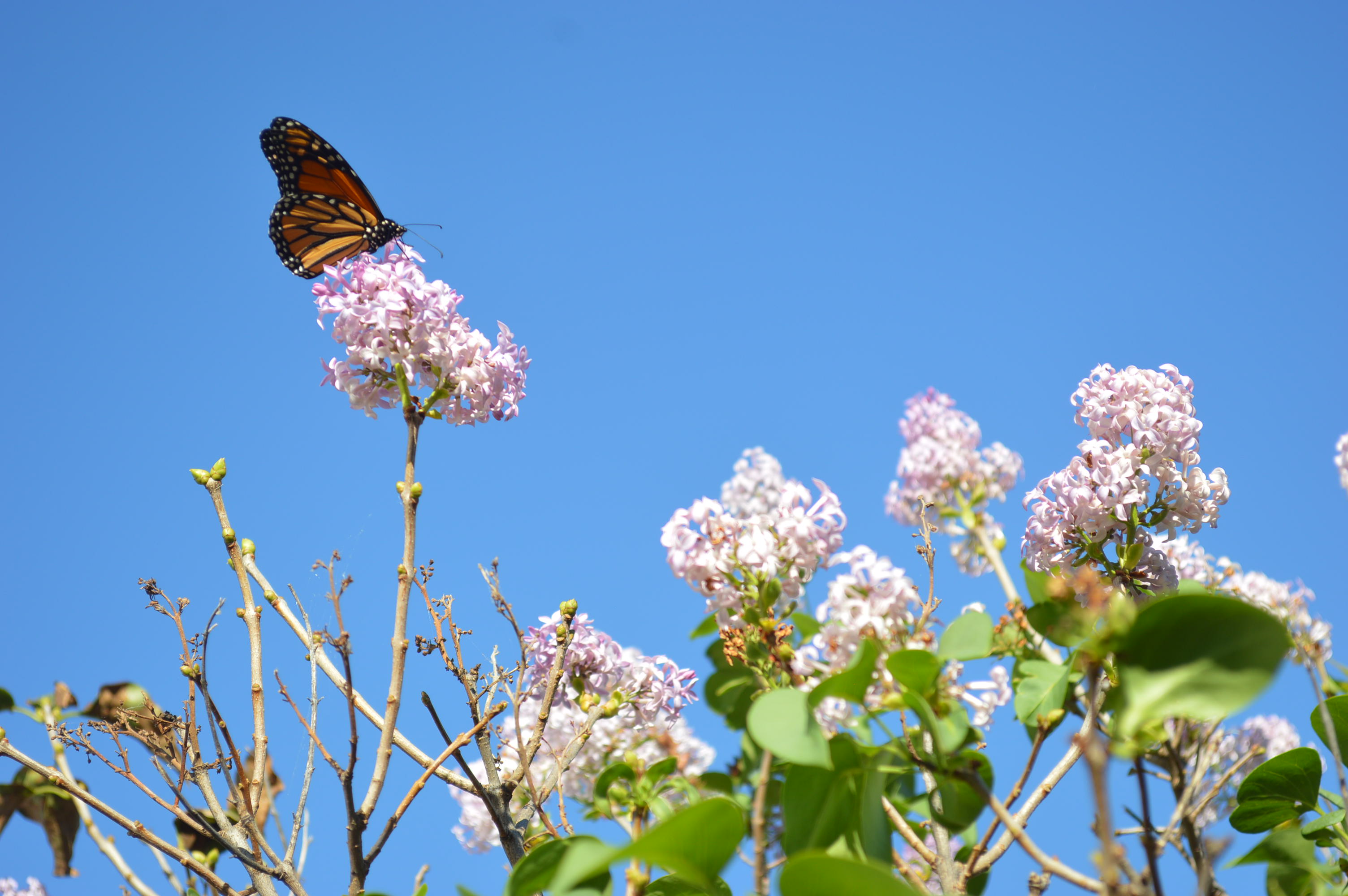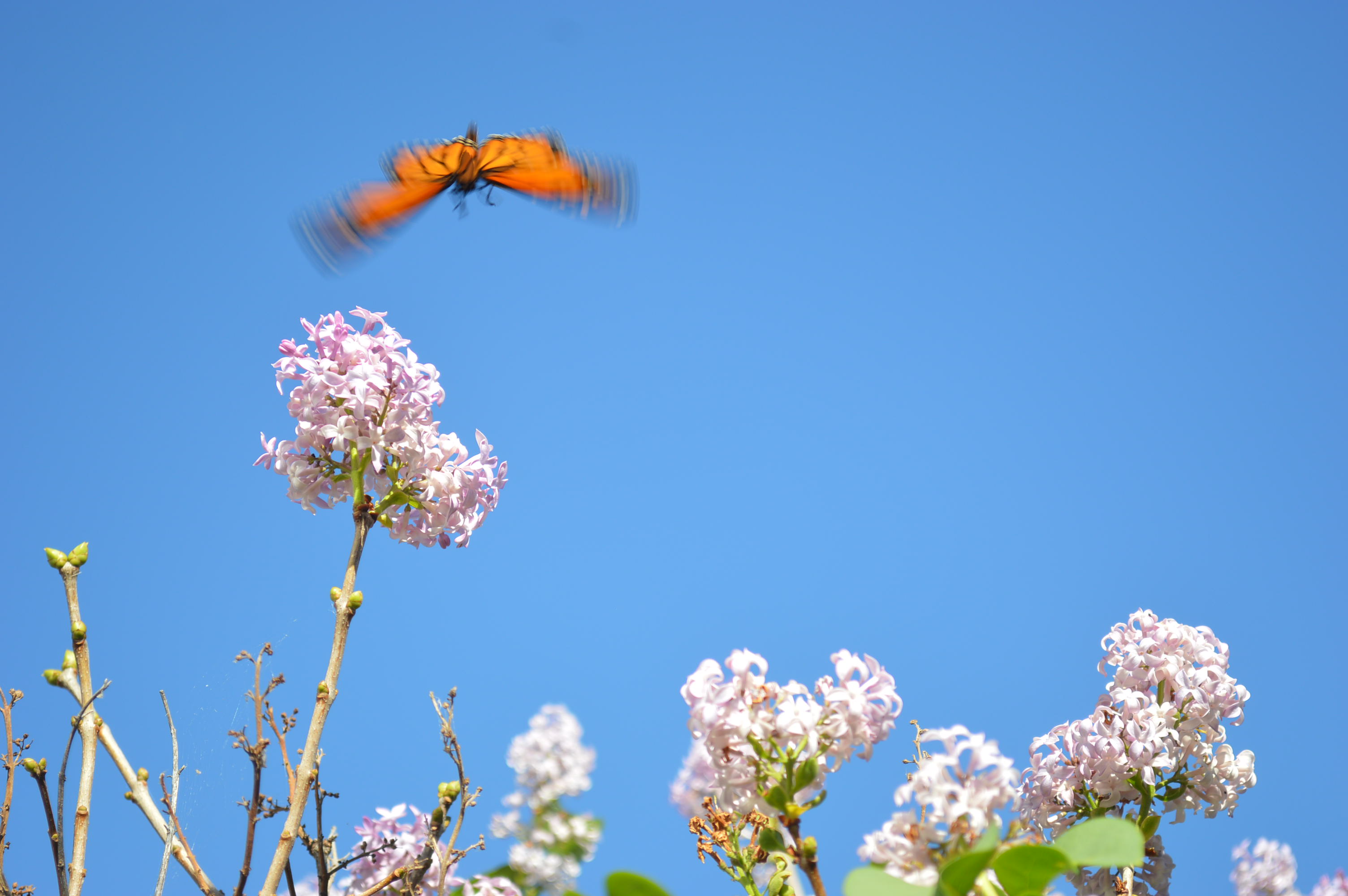
It’s not often that migrating monarchs can gain sustenance for their long journey on lilacs blooming in Iowa, but the past few seasons have proven otherwise.
Even in October, the pale purple blossoms are offering a respite for the butterflies on their seasonal migration.
Typically an early season bloomer in Iowa, lilac bushes that have been under stress can rebloom in the fall, which, in 2025, has had temperatures similar to the timing of their blossoms in spring.
This year was a particularly wet early summer, leaving lilacs subject to powdery mildew and other foliar diseases, noted Aaron Steil, specialist at Iowa State University’s Consumer Horticulture Extension.
That stress can cause the bushes to bloom in the fall, as the flower buds are set for the following year in early summer, shortly after the previous spring blooms fade.
Next spring, those lilacs will likely have fewer blossoms.
ISU Extension notes that fungal leaf spots and other diseases rarely become severe enough to cause the decline or death of the plant. Removing and destroying leaf debris and pruning out dead branches may be the best strategy in reducing diseases for shrubs and trees.
More: Derecho damaged trees bloom out of season


No Comments Yet